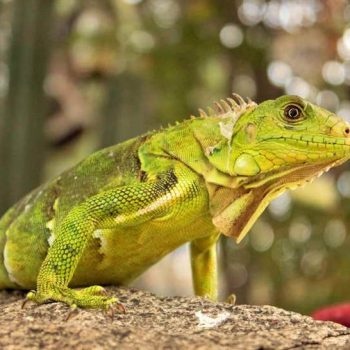
Iguana Pest Control: 5 Need to Know Facts About Green Iguanas
Have you noticed green iguanas basking in the sun, munching on your plants, or burrowing holes around your property?
These invasive reptiles have moved into Florida and their numbers just keep growing. Keep reading to find out some important green iguana facts.
- Green Iguanas Are an Invasive Species in Florida
The population of green iguanas in Florida is booming and it’s causing a lot of problems. These exotic iguanas are taking over.
Their feces runs the risk of spreading salmonella bacteria and it has a big appetite for native plant species and bird eggs. They destroy crops and plants and dig holes under buildings, causing structural damage.
Recently, the iguanas have been causing more problems for the eco-system. They disturb beach-nesting birds such as the Least Tern, eating the eggs. The damage by green iguanas also extends to the competition for space with vulnerable native species such as gopher tortoises.
- Invasive Iguanas Are Not Protected by Law
This invasive species wreak such havoc in Florida that the Florida Fish and Wildlife Conservation Commission has urged homeowners to kill them.
If you find green iguanas on your property, you do not require a permit to kill them. In fact, there are also twenty-two public spaces where they can be killed by citizens without a permit. However, it is reiterated that terminating these animals must be done humanely.
Read on here if you find invasive iguanas on your property and want to know more about green iguana pest control.
- High on the List of Commonly Spotted Reptile Invaders
There are almost 7000 reports of these green iguanas in Florida. The highest population concentration seems to be along the Atlantic Coast and along the Gulf Coast.
People find these reptiles on their property, in their houses, sunning themselves on docks near water. Everywhere.
- They’re Not Native to the USA
These green iguanas are invader species as the United States of America is not their native origin. The native habitat of these iguanas stretches from Central America to tropical regions in South America and some areas of the Caribbean Islands.
This is why green iguanas put so much pressure on the eco-system in Florida, which was not designed to support them.
- They Multiply Quickly
Females reach sexual maturity at two years old. They lay 14 to 76 eggs in a complex chamber of interconnected tunnels. The climate of Florida is perfect for their requirements and the canal network aids them in moving around.
Green iguanas have no natural predators. So, with the perfect environment, frequent and numerous reproduction rates, and no predators, there is nothing to keep the population in check.
Keeping Up to Date With Green Iguanas
If you live in an area with exotic green iguanas it’s important to understand where they come from, the damage they can do, and how to deal with them. Are you feeling more prepared after reading these green iguana facts?
For more informative and interesting posts just like this one, keep exploring our site!


Leave a Reply